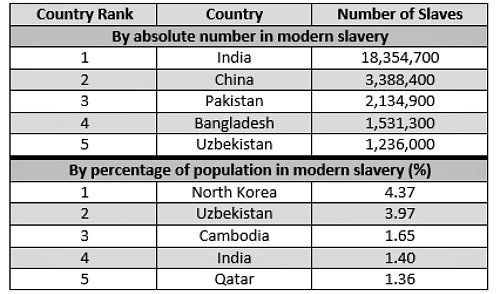With her comment about slavery First Lady Michelle Obama has triggered a controversy in the U.S. We should, however, discuss «modern forms of slavery» instead, said Steve Hanke, former adviser to Ronald Reagan in his essay for finews.first.
finews.first is a forum for renowned authors specialized on economic and financial topics. The texts are published in both German and English. The contributions appear in cooperation with Pictet, the Geneva-based private bank. The publishers of finews.ch are responsible for the selection.
When Michelle Obama delivered her address at the Democratic National Convention (DNC) in Philadelphia, she created a stir when she cried out that America’s story was «the story that has brought me to this stage tonight, the story of generations of people who felt the lash of bondage, the shame of servitude, the sting of segregation, but who kept on striving and hoping and doing what needed to be done so that today I wake up every morning in a house that was built by slaves.»
That last line, «...I wake up every morning in a house that was built by slaves,» was the focus of much attention, with some conservative critics calling the claim false or misleading. The record was set straight in a «New York Times» article of July 26th, «Yes, Slaves Did Help Build the White House».
«The slavery problem that is pressing today is modern slavery»
While it important to address sins of the past, it is always wise to focus on today’s indiscretions too. Yes, a forward-looking perspective is always prudent. The slavery problem that is pressing today is modern slavery, and it’s a shockingly huge problem.
In 2013, the Walk Free Foundation, founded by Australian mining magnate Andrew Forrest, created the «Global Slavery Index» (GSI) to track and report modern slavery worldwide.
The GSI defines modern slavery as «situations of exploitation that a person cannot refuse or leave because of threats, violence, coercion, abuse of power or deception, with treatment akin to a farm animal.» With data on 167 countries, the Global Slavery Index estimates that over 45.8 million people find themselves in some form of modern slavery today.
«Seventeen countries have at least one percent of their populations living in modern slavery»
According to the GSI, over 58 percent of slaves today live in just five countries. India’s embrace of slavery is astounding, with over 18 million Indians enslaved today – over 4.5 times more than the U.S. had during its peak decade of the 1860s.
China, Pakistan, Bangladesh, and Uzbekistan round out the top five offenders. Seventeen countries have at least one percent of their populations living in modern slavery, with North Korea leading the pack, as the accompanying table shows.

(Source: Global Slavery Index, The Johns Hopkins University)
While it might be politically correct to exclusively spend time gazing into the rearview mirror and speaking only about the history of slavery in the U.S., it would be wise to speak of the 45.8 million who are enslaved today. It’s time to shine a light on today’s slave trade and the countries where slaves reside.
Steve H. Hanke is a Professor of Applied Economics at The Johns Hopkins University in Baltimore, MD. He is also the Director of the Troubled Currencies Project at the Cato Institute in Washington, D.C. Follow him on Twitter: @steve_hanke.
Previous contributions: Rudi Bogni, Adriano B. Lucatelli, Peter Kurer, Oliver Berger, Rolf Banz, Dieter Ruloff, Samuel Gerber, Werner Vogt, Walter Wittmann, Albert Steck, Alfred Mettler, Robert Holzach, Thorsten Polleit, Craig Murray, David Zollinger, Arthur Bolliger, Beat Kappeler, Chris Rowe, Stefan Gerlach, Marc Lussy, Samuel Gerber, Nuno Fernandes, Thomas Fedier, Claude Baumann, Beat Wittmann, Richard Egger, Maurice Pedergnana, Didier Saint-George, Dieter Ruloff, Marco Bargel and Peter Hody.































